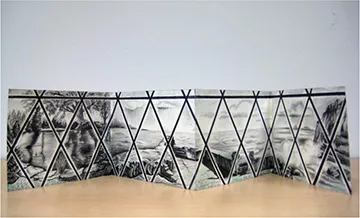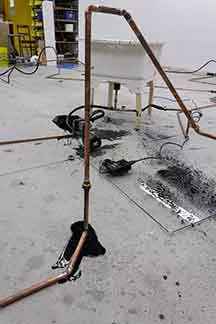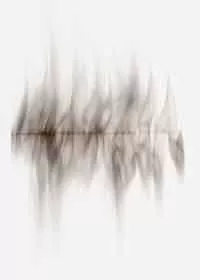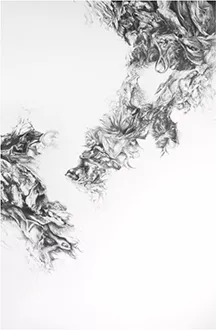




Sizes Variable. 2013

Drawing on Paper. 22x30 inches. 2013

Over four years, students are introduced to visual vocabulary, materials, techniques and concepts to develop strategies for making artwork that reflects a range of personal ideas.
Drawing 1 FAS143H
Course Objectives
- To address the diverse range of students' skill levels and aspirations
- To develop an understanding of a basic visual vocabulary
- To explore traditional and non-traditional drawing materials
- To develop observational and diagrammatic drawing techniques
- To consider conceptual strategies of contemporary drawin
Class Structure
Drawing 1 focuses on perception — to develop what you see, then to better understand the process of transposing that vision in an articulate manner to a flat surface — examines drawing as an interpretive and expressive tool. Sessions include demonstrations, slide presentations, group and individual in-class and out-of-class drawing assignments from objects, environments, the figure, and imagined and found sources. Terminologies (mass, weight, gesture, structure, line, contour, cross contour, volume, picture plane, cone of vision and station point) are explained and examined in the context of this course.
Methods of Evaluation
Twice per term students will submit a portfolio for review and grading. Written feedback is given. Photo: Artist: Alyssa Bussalaro. Untitled. Candle Soot Drawing on Paper. 22x30 inches. 2013
Outcomes
Students should develop the following: a critical awareness of their drawing in the context of contemporary practices; a willingness to explore a diverse range of materials and content; competencies in visualization, representation and abstraction; and a visual vocabulary that applies to all studio experiences.
Drawing 2 FAS243H
A continuation of FAS143H, Drawing 2 uses drawing as a resource to create artwork in a variety of materials and processes. Students develop skills in drawing systems, explore digital technologies and work in a range of contemporary hybrid practices to extend drawing's reach. Through assigned projects, illustrated presentations, readings and exhibition reviews, students are presented with issues to research and address in their work.
Course Objectives
- To develop drawing skills and approaches to image making
- To increase awareness of contemporary issues and practices
- To introduce new work processes and materials
- To engage with critical thinking and feedback
- To develop research skills
Course Structure
This course is structured around two-to-three-week cycles of exploration, discussion and feedback. Projects are introduced through discussion, supported by slides, videotapes, catalogues, critical texts, and gallery visits. In-class seminars will occur in conjunction with the issues presented, and results are resolved through in-class critical commentaries. There is an increasing emphasis placed on the material manifestation of ideas.
Methods of Evaluation
In-class evaluation through group critiques.
Outcomes
Students should develop research and production models that reflect contemporary drawing practices. Through readings and support material, students should develop a much stronger awareness of contemporary artists and art issues. Students should also become aware that historic definitions of art practice have been broadened by the development of new technologies and the changes in world view.
Drawing 3 FAS343Y
Drawing 3 is structured around issues associated with the definition of drawing as a contemporary practice. It is a term that in its broadest sense will transgress boundaries usually associated with specific disciplines and media. Students will become aware of drawing within historic and contemporary contexts, respond to topics presented in class, eventually formulating their own positions from which to produce a group of artworks.
Course Objectives
- To understand and clearly articulate fundamental aspects of contemporary drawing
- To position drawing within an interdisciplinary context (in relation to other studio disciplines), particularly with an emphasis on contemporary art practices
- To become familiar with contemporary drawing through slide presentations, tutorial lectures, gallery visits and assigned readings
- To become aware of the relationship between the production and presentation of artwork
- To develop a group of pieces based on a formulation of personal ideas and concepts
Course Structure
This course consists of introductions to topics associated with contemporary drawing practices through slides, videotapes, critical texts, tutorial lectures and gallery visits. Projects are presented on a three-to-five-week cycle. Students formulate their responses primarily outside class with ongoing critical feedback. Students prepare a presentation on contemporary drawing in consultation with the instructor, and develop written proposals in preparation for independent projects.
Evaluation
On-going individual and group critiques are accompanied by presentations of completed work.
Outcomes
Upon completion of this course, students should have an understanding of drawing practices in the broadest sense and should have a working knowledge of artists whose production includes a significant body of work based in drawing. Students should have developed research skills and a critical awareness that allows them to start developing work independently. The primary outcome for students is to establish an individually distinct art practice that reflects an awareness of the methodologies and the critical concepts underlying their production.
Drawing 4 FAS443Y
Drawing 4 is an extension of the 1st, 2nd and 3rd year-level drawing, and builds on the knowledge and skills gained during these preceding courses.
Students continue to approach drawing in the broadest sense through the development of research and production models that assist in analyzing a spectrum of contemporary visual arts practices. Emphasis is placed on the development of a coherent body of artwork, the writing of artist statements and proposals, and the documentation of artwork. In-depth discussion of student artwork takes place in group critiques. Critical and theoretical readings form the basis for discussions and help situate artwork in a considered context. At the end of this course, students should be able to critically contextualize their artwork and present it in a professional environment. Students develop a professional portfolio in preparation for a possible exhibition or application to graduate school.
Outcomes
Successful students will have demonstrated knowledge of:
- work processes and materials
- research methods
- fundamental aspects of contemporary drawing
- a definition of drawing which transgresses boundaries usually associated with specific media and disciplines
- new technologies and their impact on traditional practices
- the writing of artist statements and proposals
- the documentation of artwork
Evaluation
Successful students will have demonstrated the ability to:
- consult appropriate resources in order to gather the broadest range of relevant information
- process information in order to arrive at a complex and precise analysis of issues
- understand the production of artwork in relation to content and work processes
- recognize their own production in the context of contemporary practices
- critically assess their artwork
